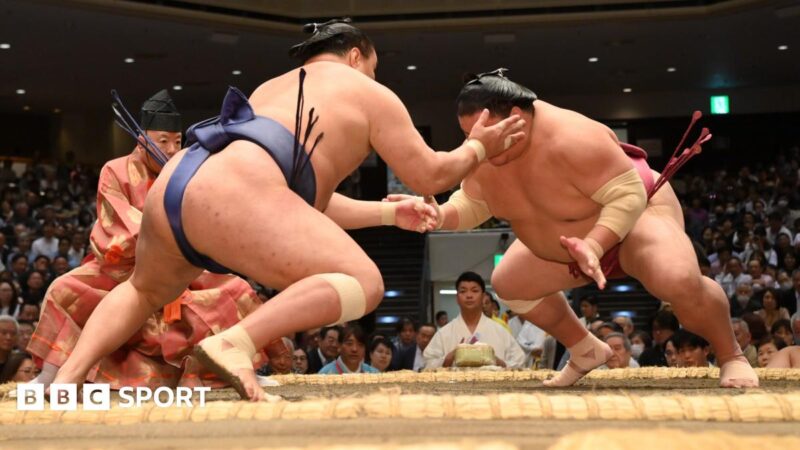The basic rules of sumo are quite simple. The bout is decided when a rikishi is forced out of the dohyo or touches the floor of the ring with anything other than the sole of his feet. Bouts can be over in a fraction of a second or last over two minutes.
There are two main fighting styles in sumo. Pusher-thrusters tend to shove their opponents out of the ring by force, while belt-fighters prefer to grapple the other rikishi and use judo-like throws.
High-ranking rikishi often excel in more than one type of combat and are able to adapt to their opponents.
There are 82 winning techniques, ranging from audacious throws to clever side-steps. The variety of techniques and strategies keeps fans fascinated, so surprises and upsets can happen in any bout.
There are no weight classes in sumo, so it is normal to see rikishi with huge size differences. Sumo rankings determine who is fighting who, rather than physical attributes.
While women can and do compete in amateur sumo wrestling around the world, they cannot enter the ring at Tokyo’s 11,000 Ryogoku Kokugikan arena, or compete in professional tournaments.








